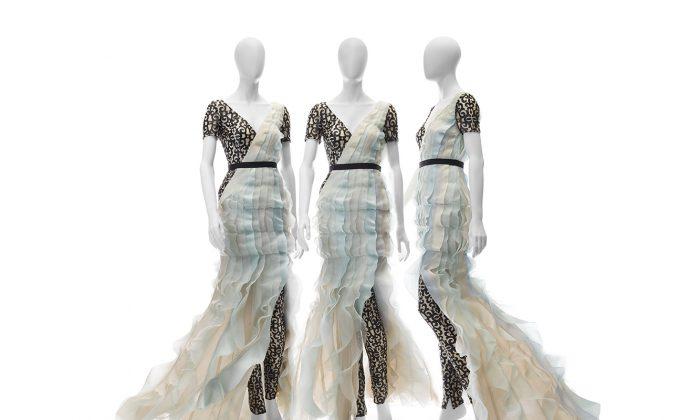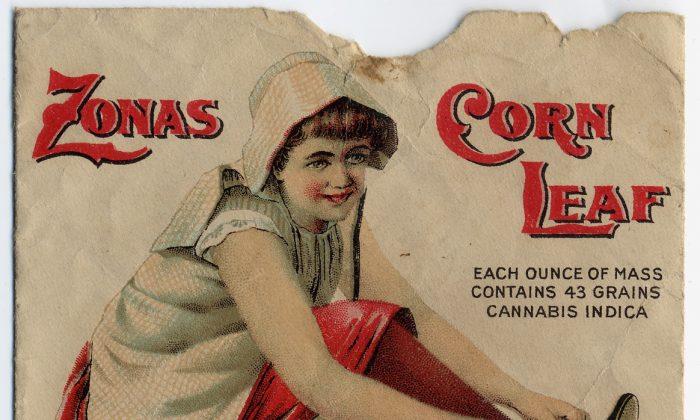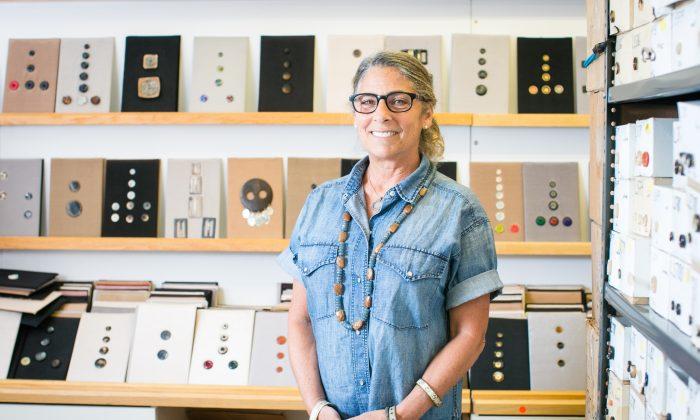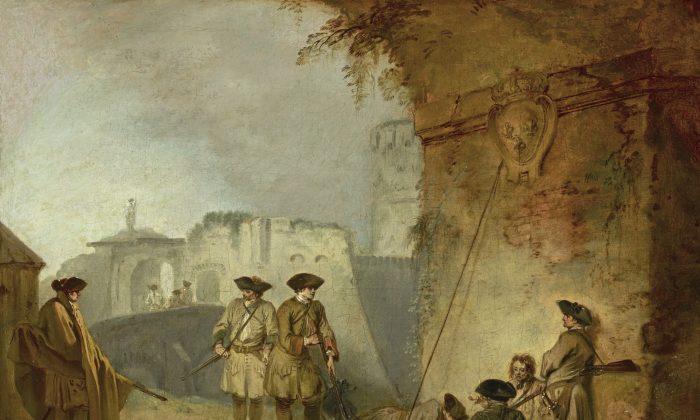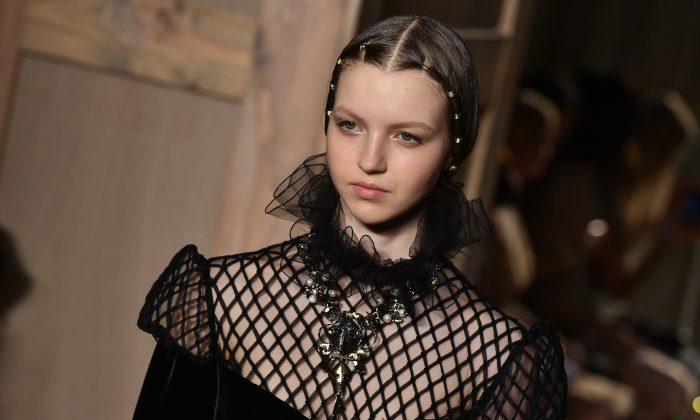The worlds of folk art and fashion have not always been as separated as they are in modern times. The traditional dress of many cultures is folk art, craft, and fashion design all rolled into one garment, made by hand using traditional methods, and applying symbols that represent a rich cultural narrative. Modern day fashion designers regularly study folk art and craft to gain fresh insights and inspiration.
To celebrate the influence of folk art in modern fashion design, the American Folk Art Museum invited 13 fashion designers to participate in a project that references the diversity and spontaneity of folk art to create something altogether different. The fruits of their labor are currently on display at the Folk Couture exhibition.
“The fascinating interplay between art and fashion, which has always existed, has lately become even more intriguing. We asked 13 designers to consider the aesthetic qualities and historic importance of works of art in our collection, and create a visual dialogue. They are responding in dramatic and surprising ways,” said Dr. Anne-Imelda Radice, director of the American Folk Art Museum.
According to guest curator Alexis Carreno, out of the initial selection of 100 artworks, the designers group ultimately gravitated toward 23 objects—an exciting mix of quilts, textiles, paintings, drawings, sculpture, and a photograph dating from the 18th century through the 20th century.
Carreno was surprised to find that many of the designers selected works that are not usually associated in the public’s imagination with the concept of folk art—the art made by self-taught artists.
Designer Bibhu Mohapatra was drawn to a rare and well-worn tattoo pattern book, made from waterproof oiled cloth. Among its pictures there is one inscribed with the title “Sailor’s Dream.” It depicts a sailor lying on a hammock, dreaming of embracing a woman.
“The tattoo book basically is the only sort of interaction he has in the sea, which is a big vast wall of emptiness and solitude. As a result, this woman appears who is a sort of loved one but also part of his reality, this vast body of water,” said Mohapatra.
The resulting couture ensemble is a mythical creature clad in a blue-green silk organza dress superimposed on a black fleur-de-lis lace bodysuit that alludes to the tattoo designs. The lightness of the silk allows even the slightest breeze from walking around it to move the fabric and evoke the movement of the tides, the way the sea algae move with the water currents below the surface, and ultimately the sea breeze.
While Mohapatra developed the narrative aspects of his chosen subject, other designers found inspiration in the patterns of some of the works.
Chadwick Bell and Fabio Costa chose the white cotton quilts that use the matelassé technique, and the avant-garde trio (Gabi Asfour, Angela Donhauser, and Adi Gil) known as threeASFOUR chose the multicolored Friendship Star Quilt.
It is fascinating to see how each of these designers took the themes and patterns in the quilts to develop their couture works.
Bell’s interpretation is a literal one in which his bold, white quilted garment retains not just the quilting technique but also the austere proportions of classical forms.
The designers from threeASFOUR played with the negative space potential of the star pattern in the Friendship Star Quilt. They took the symbolism of the star with all its religious connotations and used it to laser-cut patent leather fabric to create a three-layer garment. It encapsulates the modern aesthetic but with a nod to the past, to spiritual symbolism and even to architecture.
Fabio Costa’s ensemble is undoubtedly the most dramatic. Costa was initially torn between the choice of two art works: the Sacred Heart of Jesus and the Tree of Life Whitework Quilt—the oldest piece that the museum has in its archives dating from 1796.
The process of viewing the quilt up close and handling it with white gloves was in itself an inspiration to Costa. He remembers being really close to the quilt and relishing the opportunity to examine some of its billion astounding hand stitches. “So it was more of that poetic idea that the closer you get the more you see,” said Costa.
Ultimately, seeing that he couldn’t decide between the two works, he was allowed to have both.
The themes of the genesis of life, depicted in the Tree of Life motif of the quilt, as well as the Sacred Heart, which, for Costa, is the ultimate symbol of Immaculate Conception, lead him to create a visually striking ensemble. But more than that, Costa employed the rules of the golden ratio to design the patterns for the ensemble. The golden ratio in itself has been considered a sacred technique, previously shrouded in secret to be divulged to chosen architects, artists, and craftsmen.
The golden ratio, also known as the divine proportion, golden mean, or golden section is expressed in mathematics as 1.6180339887 or by a decimal fraction, as 0.6180340. It corresponds to the proportions found in nature including the human body, and many consider it an expression of divine order that pervades all animate and inanimate things.
Costa’s ensemble is a result of this congruence between the concept of the divine as subject matter present in the folk art pieces, and the divine technique that he used to design the garments. The result is dramatic and commanding. It is the centerpiece of the main exhibition hall, and it would be hard to imagine it anywhere else. The main exhibition hall’s layout easily lends itself to the interpretation of a room with courtiers with the queen reigning in center place, and that regal figure is clad in Costas’ diaphanous and overflowing creation.
The work of the designers ranges from the most literal to the most conceptual.
Koos van den Akker’s dress is the most literal interpretation and very similar to the idea of craftsmanship. He translated his passion about artisanal and textile traditions into a dress with a bustle. While the collage of cotton fabrics he used is reminiscent of quilting, the fact that the whole surface is covered in transparent plastic sequins transports the ensemble into the realms of high tech but wearable, albeit very theatrical.
Some of the designers relished the freedom of not having to necessarily design something wearable.
“Fashion has many restrictions; it has the creative side but it also has a business side. This exhibition allowed [the designers] to take some risks and take fashion as something more creative,” said exhibition curator Alexis Carreno.
John Bartlett’s “Elongated Shirt/Pant Two-Dimensional Wall Hanging” was inspired by a stylized wood figure of a man wearing a green shirt, black trousers, and white suspenders. He relished the opportunity to work with a sewing machine to create something that is not wearable or functional but exists to tell the tale of masculine identity, fashion, and landscape all quilted into one.
“I quilted the entire ensemble together myself. I haven’t worked on a sewing machine for years, so it was a thrill to quilt the entire piece. Very liberating and completely imperfect!”
The exhibition will be on view at the American Folk Art Museum through April 23, 2014. folkartmuseum.org
